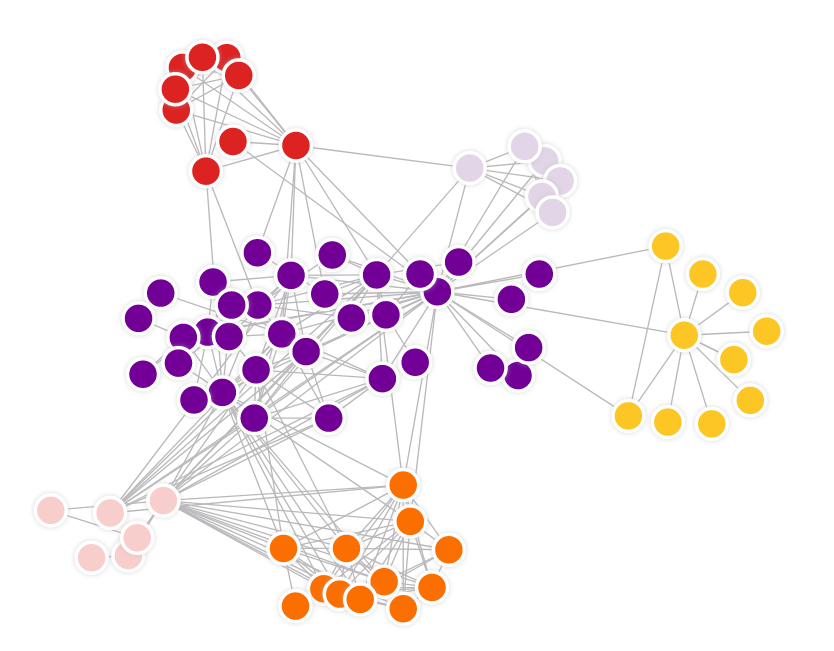Graph Clustering
Description
In graph theory, graph clustering is used to find subsets of similar nodes and group them together. It is part of graph analysis which has been attracting increasing attention in the recent years due the ubiquity of networks in the real world.
Graph clustering also known as network partitioning can be of two types:
- structure based
- attribute based clustering
The structure based can be further divided into two categories, namely community based, and structurally equivalent clustering.
Community-based methods aim to find dense subgraphs with high number of intra-cluster edges, and low number of inter-cluster edges. Examples are following algorithms:
- A min-max cut algorithm for graph partitioning and data clustering
- Finding and evaluating community structure in networks

Structure based community clustering
Structural equivalence clustering on the contrary, is designed to identify nodes with similar roles (like bridges and hubs). Example is SCAN: A Structural Clustering Algorithm for Networks

Structure based structural equivalence clustering
One example that can vary between community based and structurally equivalent clustering is Node2Vec.
Attribute based methods utilize node labels, in addition to observed links, to cluster nodes like following algorithm: Graph clustering based on structural/attribute similarities
Materials
Implementation
Node2Vec is implemented within project MAGE. Be sure to check it out in the link above.
Also, finding communities in dynamic graphs is possible with Dynamic Node2Vec.
Dynamic Node2Vec is implemented within the project MAGE. Be sure to check it out in the link above.
Use cases
Biggest use case for graph clustering is in social networks. There communities can be explored, hubs found and many more.




